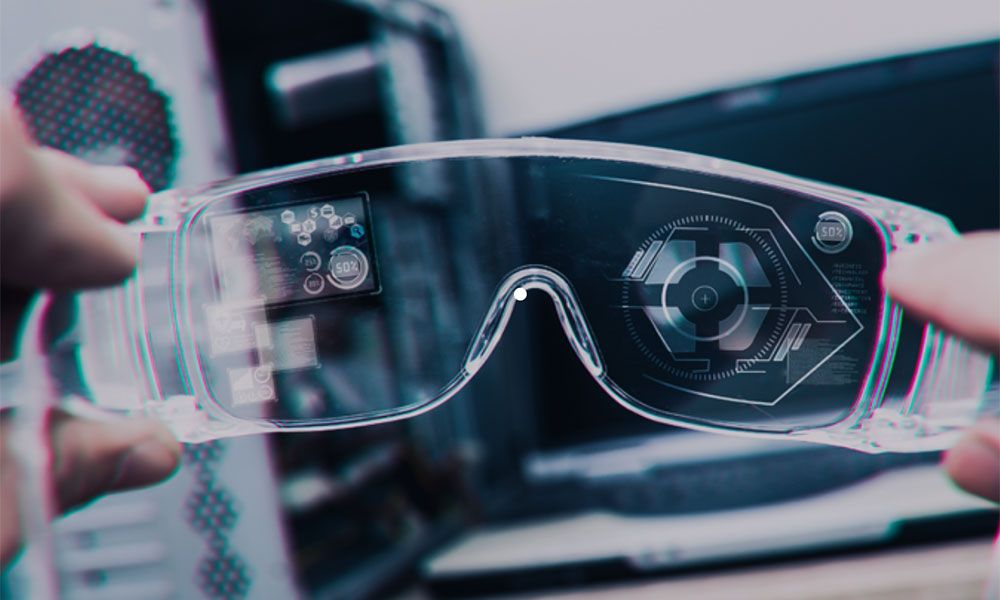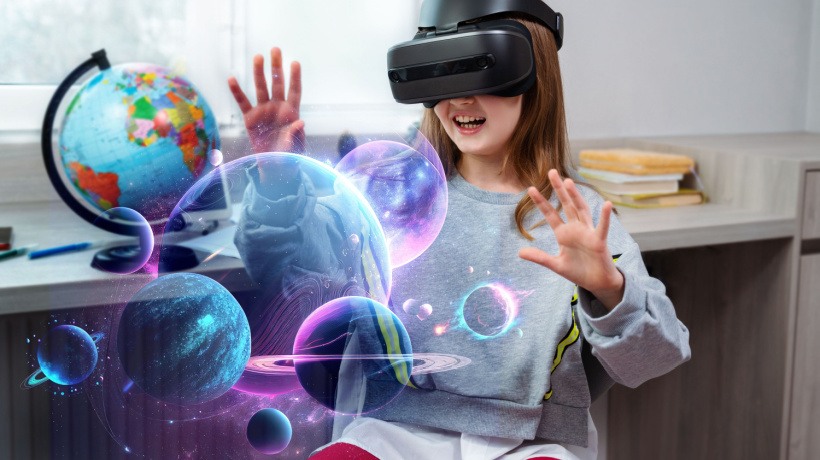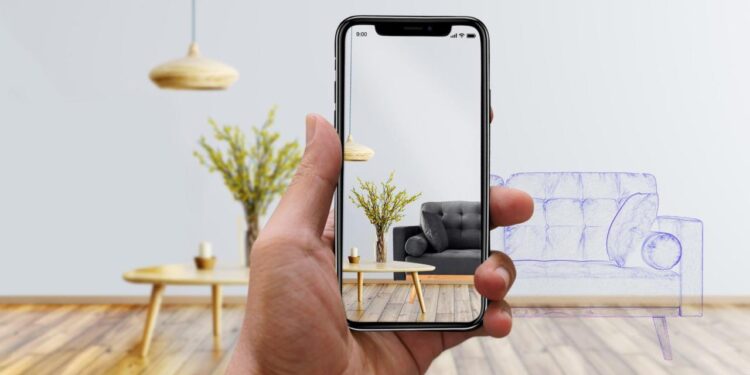In the ever-evolving landscape of digital technology, a powerful and transformative force is blurring the line between the physical and the virtual. Augmented Reality (AR), once a niche concept, is now at the forefront of a new technological revolution, seamlessly overlaying digital information onto our real-world view. This is not the fully-immersive, all-encompassing experience of virtual reality (VR); rather, AR enhances our existing reality, adding a layer of digital content that enriches our daily lives in subtle yet profound ways. This comprehensive article delves into the profound impact of AR, exploring the foundational technologies that make this a reality, the diverse applications across various industries, and the immense opportunities and challenges that lie ahead as we step into this immersive new world.
For centuries, our interaction with digital information was confined to a flat, two-dimensional screen. We would look at our computers, our phones, and our televisions to access a world of data, entertainment, and communication. AR shatters this paradigm by bringing the digital world out of the screen and into our physical space. It does this by using a device—a smartphone, a tablet, or a pair of smart glasses—to identify and track a real-world environment, and then to project digital images, text, and other media onto that environment in real time. The first taste of this technology for many was the Pokémon GO phenomenon, a simple yet powerful demonstration of how AR could create a shared, digital experience that was anchored in the real world. That was just the beginning.
Today, AR is moving far beyond games and novelty apps. It is being integrated into a wide range of fields, from enhancing surgical procedures and providing real-time instructions for factory workers to allowing consumers to virtually “try on” furniture in their homes before they buy it. This is more than a technological upgrade; it is a fundamental shift in how we perceive and interact with information. It is changing the way we learn, the way we work, and the way we play. As the hardware becomes more sophisticated—with lighter, more powerful smart glasses and more intuitive interfaces—the boundary between the digital and the physical will become increasingly blurred, creating an immersive new world that is constantly enriched by a layer of intelligent, context-aware information. The AR revolution is here, and it promises to be the most exciting and transformative technological shift of the 21st century.
The Pillars That Power Augmented Reality

The magic of augmented reality is built on a sophisticated and integrated technological foundation. Here are the core pillars that enable this immersive experience.
A. Computer Vision and SLAM
The most critical component of an AR system is its ability to “see” and “understand” the real world. This is powered by computer vision, a field of AI that enables machines to interpret and analyze visual information from the real world. A key technology within computer vision for AR is Simultaneous Localization and Mapping (SLAM). SLAM allows a device to simultaneously map its surroundings and track its own position within that map. This is what enables an AR app to “know” where a wall, a table, or the floor is, and to place a virtual object on that surface in a stable and realistic way. Without SLAM, the virtual objects would drift and appear untethered from the real world.
B. Powerful Hardware and Processing
Rendering complex 3D virtual objects and overlaying them onto a real-world video feed in real-time requires a significant amount of processing power. Modern AR is made possible by the powerful processors, graphics cards, and sensors in our smartphones, tablets, and now, dedicated smart glasses. A device needs a high-quality camera to capture the real-world view, a powerful processor to run the SLAM and computer vision algorithms, and a display that can project the virtual objects with a high level of fidelity. As these hardware components become smaller, more efficient, and more powerful, the AR experience will become more seamless and immersive.
C. Sensors and Environmental Understanding
Beyond the camera, AR devices rely on a suite of sensors to gain a deeper understanding of the environment. Accelerometers and gyroscopes track the device’s movement and orientation, providing crucial data for maintaining the stability of the virtual objects. Depth sensors, such as lidar (light detection and ranging), can create a precise 3D map of the environment, allowing virtual objects to realistically interact with physical ones—for example, a virtual ball could bounce off a real-world wall. The more sensors an AR device has, the more it can understand its environment, and the more realistic and interactive the AR experience will be.
D. 5G Connectivity and Cloud Computing
For many advanced AR applications, a high-speed, low-latency internet connection is essential. 5G networks provide the massive bandwidth and low latency required to stream high-fidelity virtual objects from the cloud in real-time, or to enable collaborative AR experiences where multiple users can interact with the same virtual objects simultaneously. Cloud computing provides the scalable infrastructure to store and render these complex virtual models, allowing for a rich AR experience without overburdening the local processing power of the device.
Applications Across a Wide Range of Industries

AR is moving beyond the realm of gaming and is being integrated into a diverse array of industries, creating new efficiencies and opportunities.
A. Retail and E-commerce
In the world of retail and e-commerce, AR is a game-changer. It allows consumers to virtually “try on” a product before they buy it, whether it’s a new pair of shoes on their feet or a new piece of furniture in their living room. Companies like IKEA have pioneered this with their AR apps that allow you to place a virtual piece of furniture in your home to see how it fits. This reduces the uncertainty of online shopping, leads to fewer returns, and creates a more engaging and interactive shopping experience.
B. Education and Training
In education and training, AR is a powerful tool for visual learning. Students can use AR to see a 3D model of the human heart on a desk in their classroom, or to explore a virtual solar system projected in the palm of their hand. For vocational training, AR can provide a safe and cost-effective way to train workers on complex machinery or dangerous procedures. A mechanic, for example, could wear smart glasses that overlay step-by-step repair instructions directly onto the engine they are working on, making the process more efficient and safer.
C. Healthcare and Medicine
In healthcare and medicine, AR is being used to save lives and improve patient outcomes. Surgeons can use AR headsets to overlay a patient’s CT scan or MRI data directly onto their body during a procedure, providing a “x-ray vision” that allows for greater precision and less invasiveness. Medical students can use AR to practice complex surgical procedures in a simulated environment. And patients can use AR apps to visualize their own anatomy and better understand their health conditions, leading to a more engaged and informed patient.
D. Industrial and Manufacturing
In the industrial and manufacturing sectors, AR is revolutionizing how we work. Factory workers can use smart glasses to receive real-time, step-by-step instructions for assembling a complex product, with virtual arrows and diagrams guiding them through each stage. This reduces errors, increases efficiency, and lowers the training time for new employees. AR can also be used for quality control, where an employee can use a device to scan a product and have the AR system highlight any potential defects.
E. Navigation and Tourism
AR is making navigation more intuitive and engaging. Instead of looking at a map on your phone, an AR navigation app can overlay virtual arrows and street names onto your real-world view, guiding you to your destination in a more natural way. In tourism, AR can be used to bring history to life. A tourist could point their phone at an ancient ruin and see a virtual recreation of what it looked like in its prime, or stand in a historical square and see virtual characters from the past walking and interacting around them.
Challenges and the Future of AR
Despite the incredible progress, the journey to a fully immersive and ubiquitous AR world is not without its challenges.
A. Hardware and the Form Factor
The most significant challenge for AR is the hardware. The current experience is largely tethered to a smartphone, which is not an ideal form factor. The future of AR lies in lightweight, stylish, and powerful smart glasses that can be worn comfortably all day. The technology for this is still in its early stages, with hurdles to overcome in battery life, display technology, and processor size. The “killer app” for AR won’t be a single app; it will be a piece of hardware that is as seamless and ubiquitous as a pair of regular glasses.
B. User Experience and Interface Design
Designing a good user experience and interface for AR is a new and complex field. How do you interact with virtual objects in a 3D space? How do you ensure that the virtual information is not distracting or overwhelming in the real world? The development of intuitive interfaces—using gestures, voice commands, and eye-tracking—will be critical to the success of AR. We are moving from a world of buttons and menus to a world of seamless, context-aware interaction, and the design principles for this are still being developed.
C. Privacy, Safety, and Ethical Concerns
As AR becomes more powerful, the privacy and safety concerns will become more pressing. A pair of AR glasses with a camera and sensors is a powerful surveillance tool. Who has access to the real-world video feed that the glasses are capturing? Could this data be used to track individuals or gather information without their consent? Furthermore, the potential for AR to create a world of visual distractions could be a major safety issue, particularly when driving or operating heavy machinery. The development of a strong ethical framework and clear regulations is paramount.
D. Content Creation and Democratization
Creating high-quality AR content, with 3D models and complex virtual environments, is currently a time-consuming and expensive process. For AR to truly go mainstream, we need to democratize content creation, making it easy for individuals and small businesses to create their own AR experiences without a team of developers and 3D artists. The rise of AI-powered tools that can generate 3D models and AR scenes from a simple text prompt will be a game-changer in this regard, unlocking a new wave of creativity.
Conclusion
In conclusion, augmented reality is far more than a futuristic gadget; it is a transformative technology that is poised to fundamentally reshape how we interact with information and our environment. By seamlessly blending the digital and physical worlds, AR is creating a new, immersive reality that is constantly enriched by a layer of intelligent, context-aware information. This is not about escaping the real world, but about making the real world more powerful, more informative, and more engaging. The technological pillars—from the advanced computer vision of SLAM to the power of high-speed 5G networks—are rapidly maturing, and the applications are already beginning to revolutionize industries from retail and education to healthcare and manufacturing.
The promise of this immersive new world is immense. It offers a solution to some of the most pressing challenges of our time, from making online shopping more intuitive to making vocational training more effective. It holds the potential to make our daily lives more convenient, our work more efficient, and our education more engaging. This is not a technological upgrade; it is a new way of seeing and understanding the world, a powerful paradigm shift that will change the very fabric of our reality.
However, as we embrace this new era, we must do so with a clear understanding of the challenges that lie ahead. The hurdles of hardware, user experience, and the immense ethical considerations of privacy and safety are not footnotes; they are central to the responsible development of AR. We must ensure that this powerful technology is used to empower humanity, not to control or exploit it. The future of AR is a journey that will be defined not just by the technology itself, but by our ability to build a new world that is more intelligent, more connected, and more human-centered. The canvas of our new reality is ready to be painted, and the most exciting part is that the revolution is only just beginning.




